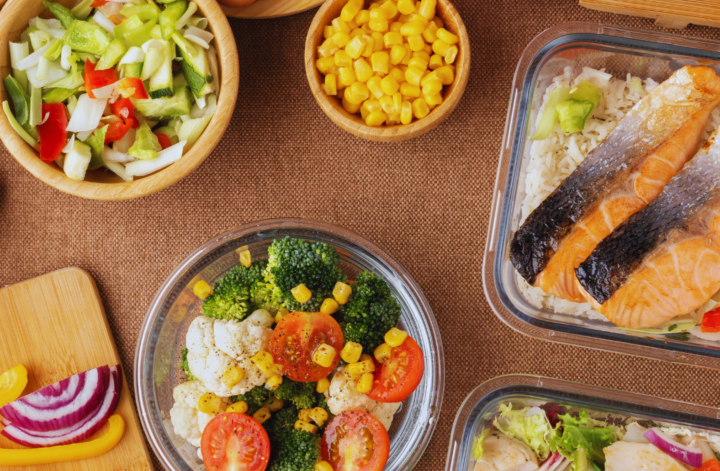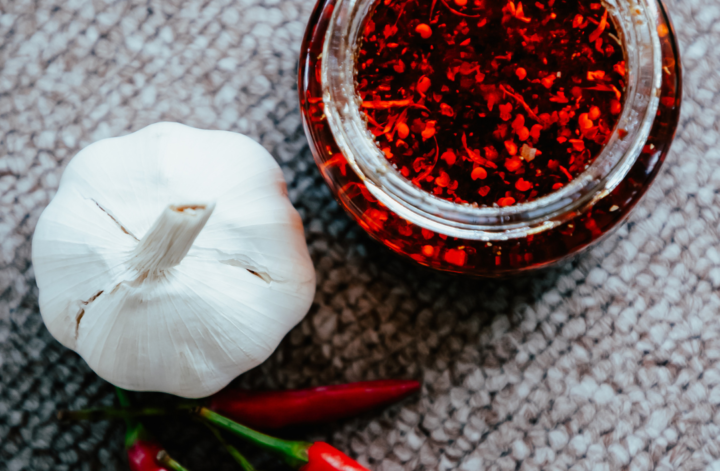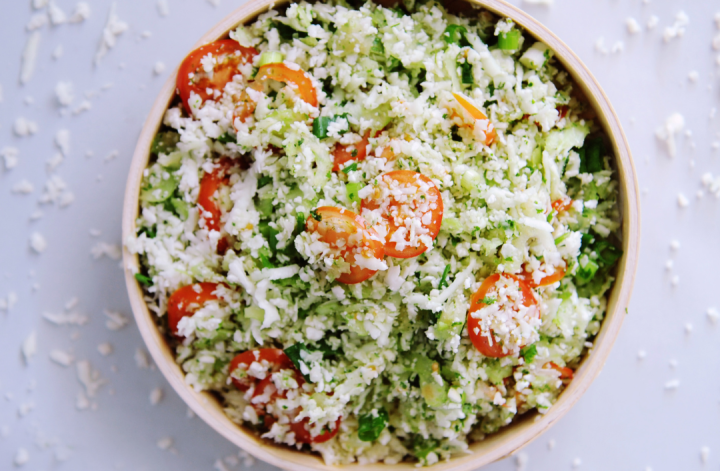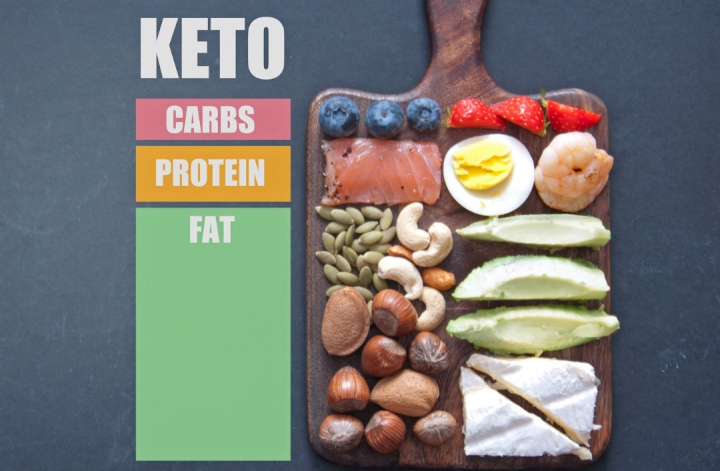Meal planning can transform the way someone approaches their weekly meals, making the process simpler and more efficient. Effective meal planning saves time, reduces stress, and can lead to healthier eating habits. By organizing meals in advance, individuals can minimize last-minute decisions that often lead to unhealthy choices.
Incorporating a variety of food groups is essential for balanced nutrition. Strategies such as batch cooking, using seasonal ingredients, and maintaining a well-stocked pantry can greatly enhance the meal-planning experience.
With the right approach, meal planning can fit seamlessly into anyone’s lifestyle. Understanding the basics can pave the way for delicious, nutritious meals throughout the week.
Understanding Meal Planning
Meal planning involves preparing meals in advance, and optimizing time, cost, and nutrition. Effective meal planning can lead to healthier eating habits and reduced food waste.
Benefits of Meal Planning
Meal planning provides several advantages. It saves time by reducing daily decision-making about meals. When meals are planned, shopping can be streamlined, often leading to improved budgeting.
Additionally, it promotes healthier eating. By planning meals ahead, individuals can focus on nutritious options, ensuring a balanced diet rich in fruits, vegetables, and whole grains. This approach can also minimize impulsive food choices.
Moreover, meal planning can help reduce food waste. By using ingredients efficiently and preparing appropriate portion sizes, less food is thrown away. This not only benefits the environment but also helps in saving money.
Basic Principles of Meal Planning
A few fundamental principles can guide effective meal planning. First, it’s essential to assess dietary needs and preferences. This includes considering any allergies, dietary restrictions, or specific nutrition goals.
Next, creating a weekly menu can provide structure. This can involve listing meals for breakfast, lunch, and dinner, as well as snacks. Incorporating a variety of foods keeps the menu interesting.
Shopping with a list is crucial. A well-organized grocery list helps avoid impulse purchases and ensures all necessary ingredients are on hand. Finally, preparing meals in batches can further streamline the process, allowing for quick access to home-cooked meals during busy weeks.
Getting Started with Meal Planning
Meal planning involves setting clear goals and understanding dietary needs. Achieving these begins with thoughtful preparation and assessment.
Setting Your Meal Planning Goals
When initiating meal planning, it’s crucial to define specific goals. Individuals may aim to save time, reduce food waste, or improve nutrition.
To set effective goals, consider the following points:
- Time Commitment: Decide how much time can be allocated each week for meal prep.
- Budget: Establish a budget for groceries. This influences shopping choices.
- Portion Control: Determine the number of meals to prepare. This can help with portion management and waste reduction.
Clearly defined goals create a foundation that guides the meal-planning process.
Assessing Dietary Needs
Understanding dietary needs is essential before creating a meal plan. It ensures that meals are balanced and cater to personal health requirements.
Start by evaluating the following aspects:
- Nutritional Requirements: Identify necessary nutrients based on age, activity level, and health conditions.
- Dietary Restrictions: Take into account any allergies or intolerances. This could include gluten, dairy, or nuts.
- Preference Tracking: Keep a record of favorite foods and meals. This helps create a plan that is enjoyable and sustainable.
By assessing these factors, individuals can develop a meal plan that promotes health and satisfies personal tastes.
Creating a Meal Plan
Effective meal planning involves selecting the right recipes, ensuring nutritional balance, and introducing a variety of foods to maintain interest and satisfaction. This structured approach helps streamline grocery shopping and enhances overall health.
Choosing Recipes
Start by selecting recipes that align with dietary preferences and restrictions. It is essential to consider prep time and cooking methods that fit one’s schedule. Choose recipes that use similar ingredients to minimize waste.
Creating a list of core meals can simplify this process. For example:
- Breakfast: Overnight oats, smoothies
- Lunch: Quinoa salad, wraps
- Dinner: Stir-fried vegetables with protein, baked fish
Diverse recipe sources, such as cookbooks or food blogs, can expand options. Reviewing what ingredients are currently available in the pantry can also inspire recipe choices.
Balancing Nutrition
A balanced meal plan incorporates various food groups to meet nutritional needs. Aim for a mix of proteins, carbohydrates, and fats at each meal.
- Proteins: Chicken, beans, tofu
- Carbohydrates: Brown rice, sweet potatoes, whole grain pasta
- Fats: Avocado, nuts, olive oil
Using the MyPlate method can be helpful. Each meal should consist of:
- Half vegetables and fruits
- A quarter of protein sources
- A quarter of whole grains
This approach leads to meals that support energy levels and overall well-being.
Incorporating Variety
Incorporating variety prevents meal monotony and promotes nutrient diversity. This can be achieved through:
- Different cuisines: Explore Italian, Mexican, or Asian recipes.
- Seasonal ingredients: Take advantage of local produce for freshness.
- Texture and color: Mix crunchy, creamy, and colorful foods to keep meals appealing.
Planning meals with different cooking techniques—like grilling, steaming, or roasting—also helps maintain interest. By keeping a list of favorite seasonal ingredients and trying out new recipes regularly, meal planners can create exciting and balanced meal plans.
Organizing Your Shopping
Effective organization for grocery shopping can enhance meal planning success and reduce stress. By following a streamlined approach, shoppers can ensure they purchase only what is necessary, saving both time and money.
Making a Shopping List
Creating a shopping list is a crucial step in the planning process. A well-structured list helps consumers avoid impulse buys and ensures they have all ingredients ready for meals.
Steps to Create an Effective Shopping List:
- Review Meal Plans: Check the planned meals for the week and note all necessary ingredients.
- Categorize Items: Organize the list by sections of the store, such as produce, dairy, and pantry items. This reduces backtracking.
- Check Inventory: Before heading out, see what items are already in stock at home to avoid duplicates.
Utilizing apps or templates can also streamline this process, helping users keep track of frequently used items and prices.
Shopping Tips to Save Time and Money
Implementing specific strategies while shopping can lead to significant savings and efficiency. Simple tactics can transform the grocery shopping experience.
Key Tips Include:
- Buy in Bulk: Purchase staple items like grains, beans, and spices in bulk to save money.
- Use Coupons and Discounts: Keep an eye out for coupons, loyalty cards, and sales. Planning purchases around discounts can yield considerable savings.
- Shop at Off-Peak Hours: Shopping during less busy times can result in a quicker, less stressful experience.
Staying focused on the list and avoiding distractions also contribute to effective shopping.
Meal Prepping Strategies
Meal prepping can significantly ease the daily cooking burden while promoting healthier eating habits. By implementing effective strategies like batch cooking and efficient food storage, individuals can streamline their meal preparation process.
Batch Cooking
Batch cooking involves preparing multiple servings of meals in a single cooking session. This method saves time and energy, making it easier to stick to a meal plan.
- Choose Versatile Recipes: Select dishes that can be easily repurposed throughout the week, such as grain bowls, casseroles, or stir-fries.
- Cook in Bulk: Prepare large quantities of staples like rice, beans, and roasted vegetables. These items can form the base for various meals.
- Use Freezer-Friendly Options: Make portions of meals and store them in the freezer. Soups, stews, and pasta dishes typically freeze well, providing convenient options later.
Efficient Food Storage
Proper food storage techniques extend the shelf life of prepped meals and ensure quality.
- Use Airtight Containers: Invest in high-quality containers with tight seals to prevent spoilage. Glass containers are often a preferred choice for their durability.
- Label and Date: Clearly label containers with contents and dates. This practice helps track freshness and minimizes waste.
- Organize the Fridge or Freezer: Keep food in designated areas based on use and temperature needs. Prioritize space for frequently used items to simplify access.
By applying these strategies, meal prepping becomes a more manageable and efficient process.
Maintaining Your Meal Plan
Sustaining a meal plan requires adaptability and smart management of food. Adjustments can help accommodate unexpected events, while strategic handling of leftovers reduces waste and saves time in future meal prep.
Adjusting Plans for Flexibility
Flexibility is crucial in meal planning. Life can be unpredictable, so adapting a meal plan can prevent frustration.
When schedules change, consider these strategies:
- Swap Meals: If a planned dish isn’t feasible, substitute it with another that uses similar ingredients.
- Use Seasonal Ingredients: Shift to different fruits and vegetables that are in season. They may be more affordable and fresher.
- Incorporate Simple Meals: Have a few quick recipes on standby for busy days. For instance, stir-fries or salads can use leftovers creatively.
These adjustments ensure that meals remain practical and enjoyable, accommodating any surprises life may throw.
Dealing with Leftovers
Leftovers can be a valuable resource when managed properly. They save time, reduce waste, and provide quick meal options.
Here are effective strategies to handle leftovers:
- Reinvent Leftovers: Use them in new dishes. For example, roasted chicken can become tacos or a salad topping.
- Label and Store: Keep leftovers in clear containers with dates to keep track of freshness. This practice helps prioritize which items to consume first.
- Plan for Leftovers: Include intentional leftovers in the meal plan. Cooking in batches not only saves time but also ensures more variety during the week.
By approaching leftovers with creativity and organization, they can contribute positively to meal planning.
Time-Saving Techniques
Efficient meal planning hinges on quick recipes and smart use of kitchen tools. Implementing specific strategies can significantly reduce time spent in the kitchen.
Quick and Easy Meal Ideas
Quick meals can save precious time without compromising nutrition. Consider options like stir-fries, salads, or sheet pan dinners that require minimal preparation.
For a stir-fry, choose pre-cut vegetables and protein, then sauté in a pan with a simple sauce. Salads can be made vibrant with leftover proteins and a variety of toppings.
Sheet pan dinners involve placing all ingredients on one tray, allowing for easy cooking and cleanup. Here’s a sample meal plan for a week using quick recipes:
| Day |
Meal Idea |
| Monday |
Chicken stir-fry |
| Tuesday |
Taco salad |
| Wednesday |
Sheet pan vegetables |
| Thursday |
Quinoa and beans bowl |
| Friday |
Pasta with cherry tomatoes |
Using Kitchen Gadgets Efficiently
Kitchen gadgets can streamline meal preparation. Tools like slow cookers, pressure cookers, and food processors can dramatically reduce cooking time.
A slow cooker allows meals to be prepared in advance. Simply add ingredients in the morning, and dinner is ready by night. Pressure cookers, on the other hand, can cook meals in a fraction of the time compared to traditional methods.
Food processors are excellent for chopping, slicing, and blending, saving time on food prep. When planning meals, selecting recipes that can be easily managed with these tools will enhance efficiency. Incorporating these gadgets into routine cooking can make weekly meal preparation quicker and more enjoyable.
Healthy Eating Habits
Developing healthy eating habits is essential for maintaining energy levels and overall well-being. Mindful eating and the integration of superfoods play a significant role in achieving nutritional goals.
Mindful Eating Practices
Mindful eating encourages individuals to focus on their food choices, portion sizes, and dining environment. This practice involves paying attention to the sensory experience of eating, including taste, texture, and aroma.
To implement mindful eating:
- Eat slowly: Taking time to chew allows for better digestion and satisfaction.
- Minimize distractions: Avoid screens and focus solely on the meal to enhance awareness.
- Listen to hunger cues: Recognizing true hunger helps prevent overeating.
By incorporating these techniques, individuals can improve their relationship with food and make healthier choices.
Incorporating Superfoods
Superfoods are nutrient-rich foods that provide exceptional health benefits. Including them in daily meals can enhance nutritional intake significantly.
Some popular superfoods include:
- Quinoa: A complete protein packed with fiber.
- Blueberries: Rich in antioxidants and vitamin C.
- Kale: High in vitamins A, K, and calcium.
Incorporating superfoods can be simple. Add them to smoothies, salads, or whole-grain dishes. This variety enriches meals and supports health goals. Superfoods contribute to a balanced diet, boosting energy and immune function.
Budget-Friendly Tips
Meal planning can be cost-effective with the right strategies. By purchasing in bulk and shopping seasonally, individuals can save money while ensuring they have the necessary ingredients on hand.
Buying in Bulk
Buying in bulk is an effective way to reduce grocery expenses. Many items, such as grains, pasta, canned goods, and frozen vegetables, are cheaper when purchased in larger quantities.
Here are some tips for bulk purchasing:
- Storage: Ensure there is adequate storage space. Proper containers can help maintain freshness.
- Focus on staples: Items with long shelf lives, like rice and beans, are ideal for bulk buying.
- Plan meals: Create meal plans based on bulk purchases to maximize their use. This minimizes waste and maximizes savings.
Discount stores often offer bulk pricing on certain items. Comparing costs per unit can highlight the best deals.
Seasonal Shopping
Seasonal shopping allows individuals to purchase fresh produce at lower prices. Fruits and vegetables are often less expensive when they are in peak season, reducing overall grocery costs.
Consider these points for seasonal shopping:
- Local markets: Visit farmers’ markets for fresh, seasonal produce. They may offer better prices than grocery stores.
- Cook with the seasons: Plan meals around in-season ingredients for improved flavor and savings.
- Preserve seasonal items: If buying in bulk, consider freezing, canning, or drying seasonal produce. This extends their use throughout the year.
Utilizing seasonal benefits enhances taste and saves money while supporting local agriculture.










